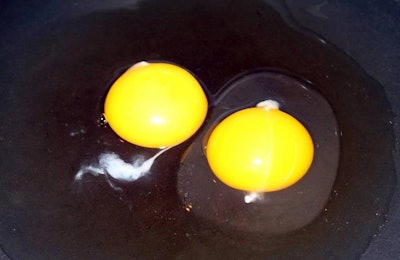
The number of non-organic cage-free layers housed in the U.S. rose to 16.6 million head in April of 2016, according to U.S. Department of Agriculture figures. This is roughly double the 8.7 million head housed in 2014.
With all the pledges made by retailers, foodservice outlets and food manufacturers to purchase cage-free eggs, it would seem cage-free eggs would be flying off the grocery store shelves in the U.S. But, that doesn’t seem to be the case, according to comments made by egg producers at the United Egg Producers (UEP) Area 5 Briefing held on August 15 in Atlanta.
Most of the cage-free purchase pledges have 2025 as the year when transition to cage free will be completed, and most of the retail pledges carry provisions with exceptions around availability and affordability of cage-free eggs. These purchase pledge deadlines don’t contain interim benchmarks, so egg producers have concerns regarding timing of cage-free expansions or conversions with actual increases in market demand for cage-free eggs.
Chaos is 'already here'
Chad Gregory, president and CEO, United Egg Producers, suggested that the timing of so many cage-free purchase pledges all taking place in 2025 could lead to chaos in egg markets for egg purchasers and consumers.
“We don’t need to wait until 2025 for chaos; it is already here,” said Adolphus Baker, president, chief executive and chairman of board of directors, Cal-Maine Foods. The glut of cage-free eggs coupled with an oversupply of eggs in general in the U.S. has resulted in some egg producers diverting cage-free eggs to breakers rather than being sold at retail.
David Lathem, president, Lathem Family Farms, echoed Baker’s comments and said that it is a confusing time for egg producers. There is uncertainty over the types of housing systems that will be considered as acceptable cage-free housing by customers long term, and it isn’t known whether consumers will actually pay the additional cost for cage-free eggs as long as they have access to less expensive cage-produced eggs.
As the industry has added approximately 8 million cage-free layers in the past two years, supply has already overshot demand for cage-free eggs. Ups and downs may await the market as the industry converts existing housing to meet the expected need for 190 million cage-free hens by 2025 if all of the cage-free pledges are met.


















